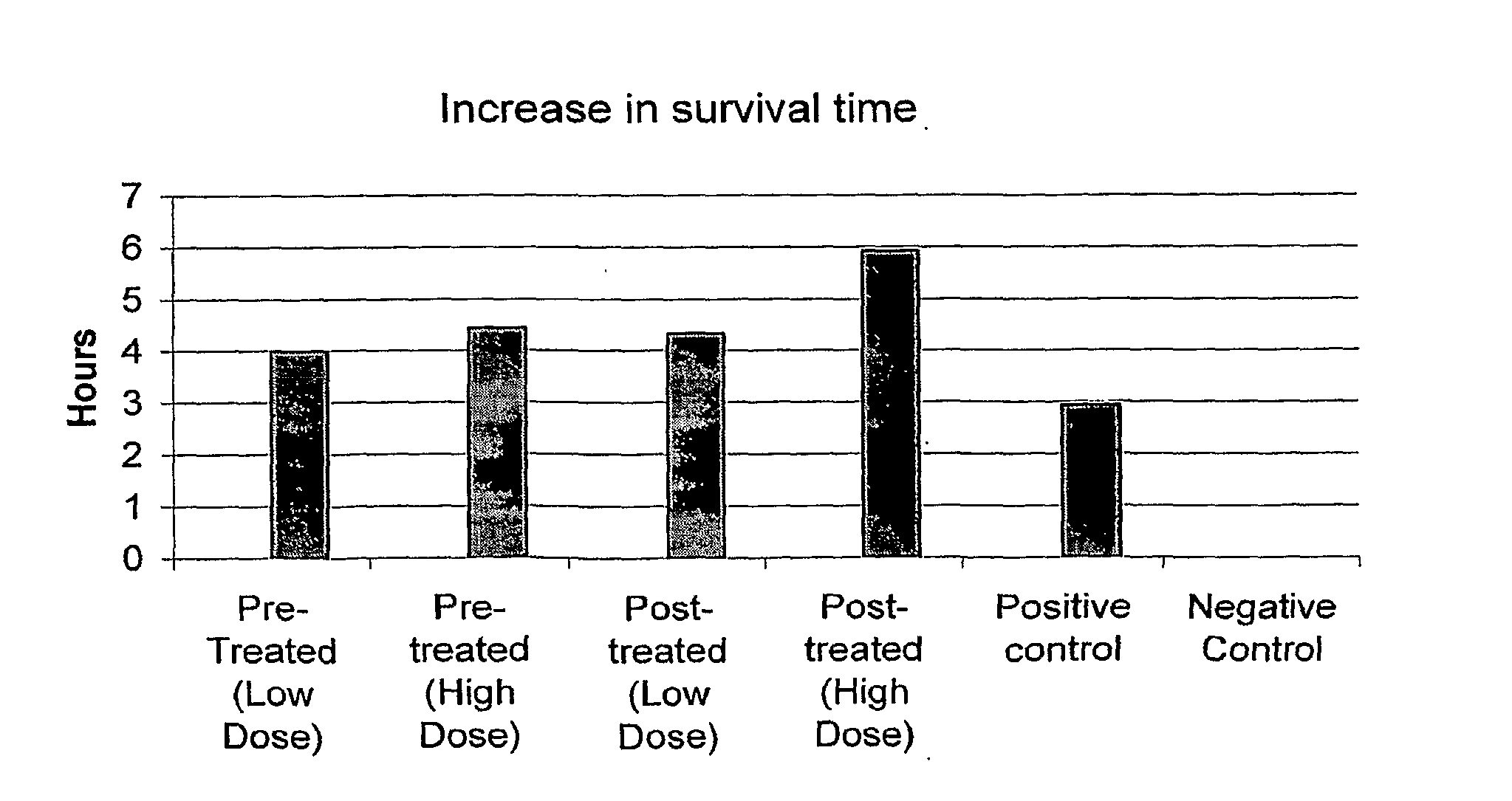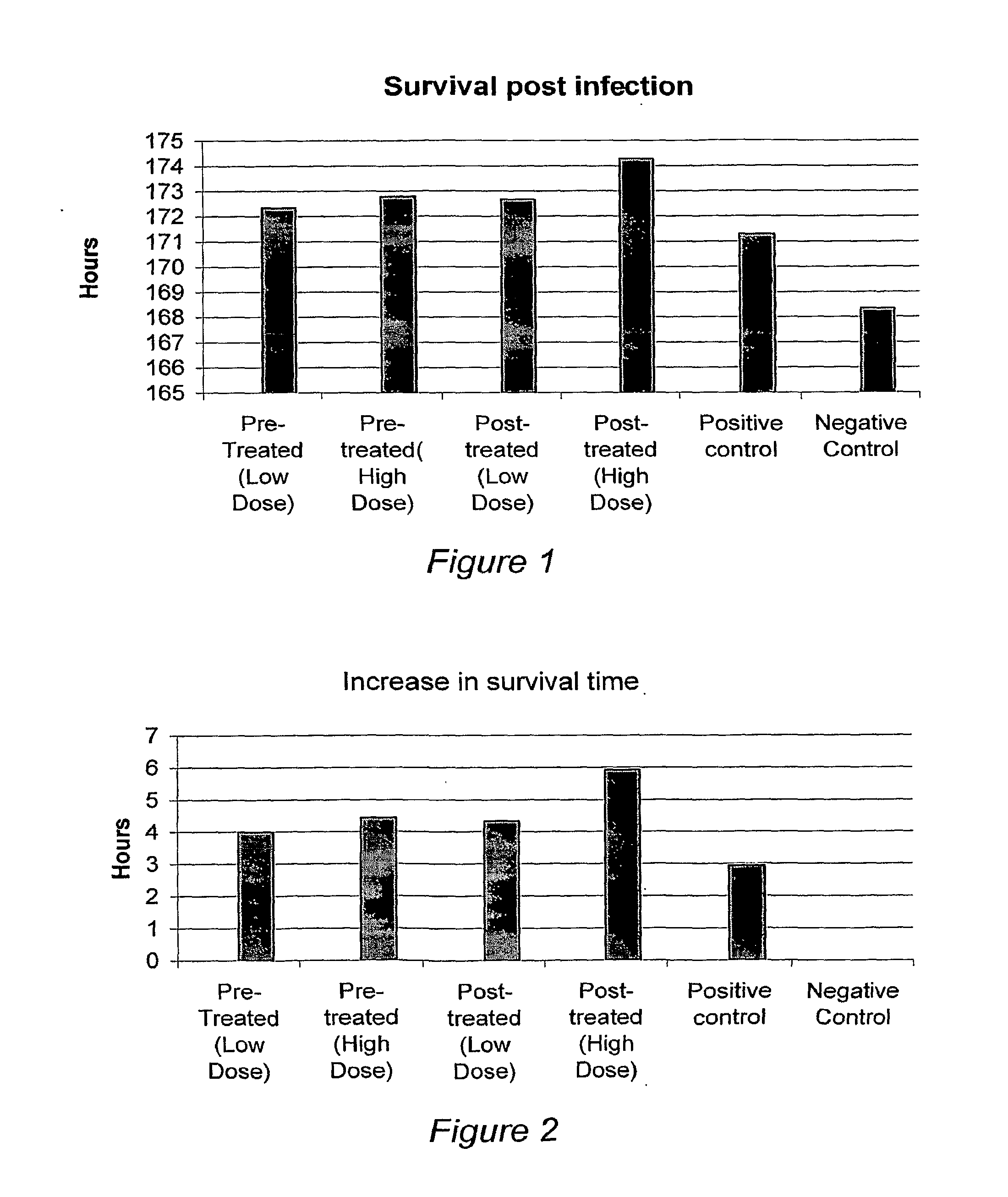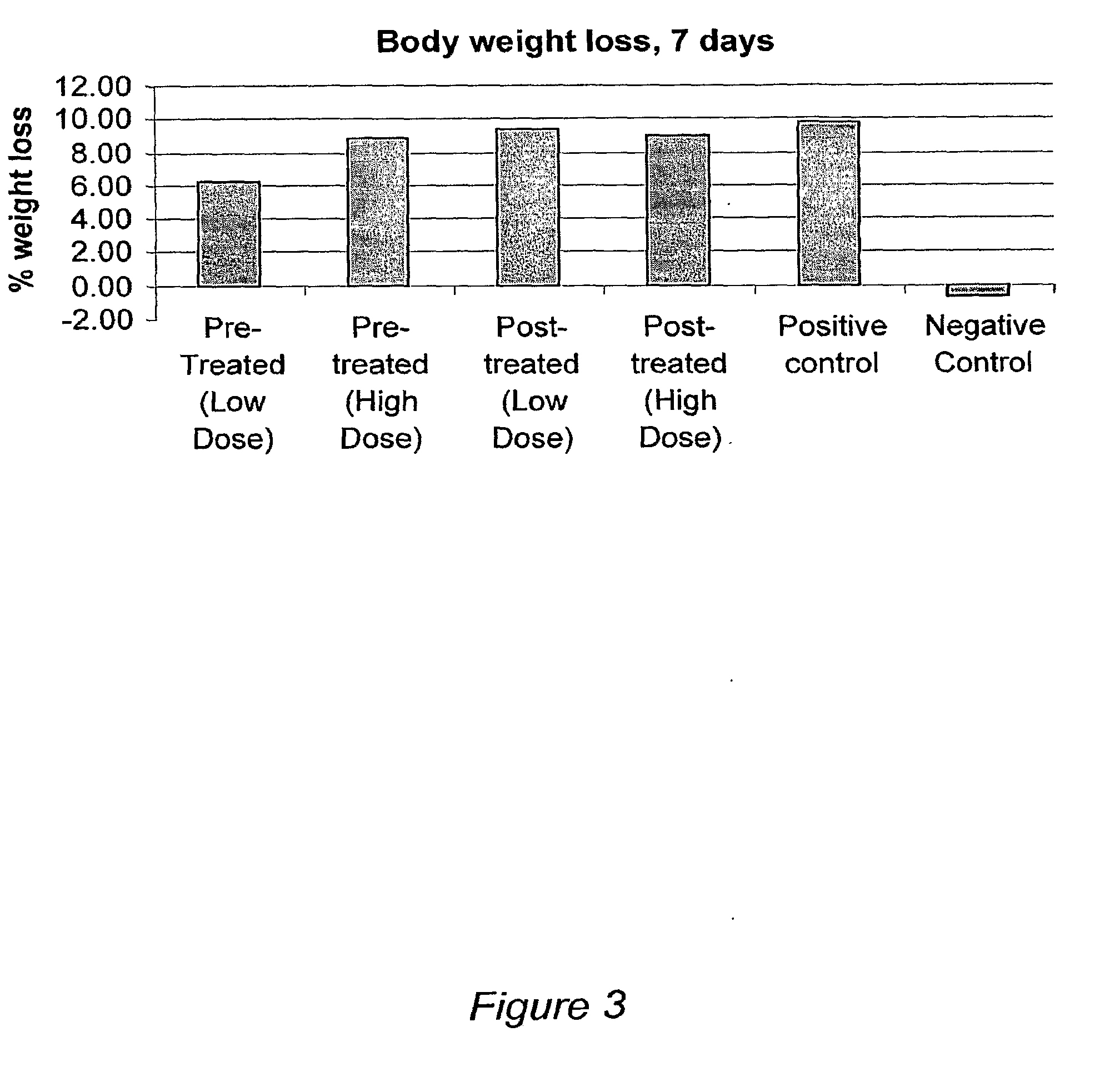Self assembling amphiphilic polymers as antiviral agents
a polymer and antiviral technology, applied in the field of amphiphilic polymers, can solve the problems of limited attachment of targeting moieties such as antibodies or cell-adhesion molecules to peg block copolymers, and lack of functional groups of pegs, so as to achieve efficient solubility, distribution, and delivery of drugs
- Summary
- Abstract
- Description
- Claims
- Application Information
AI Technical Summary
Benefits of technology
Problems solved by technology
Method used
Image
Examples
example 7
PEG-Di(alkylsuccinate)dithioether
[0147]
[0148]The 2,3-bis-O-hexadecyl ether of DTT (meso-2,3-bis(hexadecyloxy)butane-1,4-dithiol) is prepared by a modification of the procedure of S. Sasaki et al., Chem. Pharm. Bull. 33(10):4247-4266 (1985). This is added to PEG-dimaleate by the method of Example 1.
[0149]By this method, the following ether dithiols are coupled to the PEG polymer:[0150]Example 7a: meso-2,3-bis(n-butoxy)butane-1,4-dithiol[0151]Example 7b: meso-2,3-bis(4-nonylphenylmethoxy)butane-1,4-dithiol[0152]Example 7c: meso-2,3-bis(biphenyl-4-methoxy)butane-1,4-dithiol[0153]Example 7d: 4,6-bis(decyloxy)benzene-1,3-dimethanethiol[0154]Example 7e: 4,5-bis(decy oxy)benzene-1,2-dimethanethiol[0155]Example 7f: 3,4-bis(decyloxy)thiophene-2,5-dimethanethiol
example 8a
Substituted PEG Succinates
[0156]The method of Example 1 is followed, except that 2-dodecen-1-yl succinic anhydride is used in place of maleic anhydride. The dodecenyl substituent provides the pendant C chains in the final polymer.
[0157]By this method the following substituted succinic anhydrides are esterified with PEG:[0158]Example 8Aa: isobutenylsuccinic anhydride[0159]Example 8Ab: 2-octene-1-yl succinic anhydride[0160]Example 8Ac: octadecenyl succinic anhydride[0161]Example 8Ad: 3-oxabicyclo-hexane-2,4-dione[0162]Example 8Ae: cyclohexanedicarboxylic anhydride[0163]Example 8Af: phthalic anhydride[0164]Example 8Ag: 4-decyl phthalic anhydride[0165]Example 8Ah: hexahydromethylphthalic anhydride[0166]Example 8Ai: tetrahydrophthalic anhydride[0167]Example 8Aj: norbornenedicarboxylic anhydride[0168]Example 8Ak: cantharidin[0169]Example 8Al: bicyclooctenedicarboxylic anhydride[0170]Example 8 Am: exo-3,6-epoxy-1,2,3,6-tetrahydrophthalic anhydride[0171]Example 8An: S-acetyl mercaptosuccini...
example 8b
PEG-Di(alkylamidosuccinyl)dithioether with Pendant Alkyl Groups
[0172]By the method of example 1, the substituted PEG succinates obtained as described in Examples 8A and 8Aa through 8An are reacted with DTT.
[0173]By this method, the following dithiols are reacted with any of the substituted PEG succinates obtained as described in Examples 8A and 8Aa through 8An:[0174]Example 8 Ba: ethane-1,2-dithiol[0175]Example 8Bb: propane-1,3-dithiol[0176]Example 8Bc: butane-1,4-dithiol[0177]Example 8Bd: pentane-1,5-dithiol[0178]Example 8Be: hexane-1,6-dithiol[0179]Example 8Bf: 1,4-benzenedithiol[0180]Example 8Bg: 1,3-benzenedithiol[0181]Example 8Bh: 1,4-benzenedimethanethiol[0182]Example 8Bi: 1,3-benzenedimethanethiol[0183]Example 8Bj: 1,2-benzenedimethanethiol
PUM
| Property | Measurement | Unit |
|---|---|---|
| molecular weight | aaaaa | aaaaa |
| pKa | aaaaa | aaaaa |
| pH | aaaaa | aaaaa |
Abstract
Description
Claims
Application Information
 Login to View More
Login to View More - R&D
- Intellectual Property
- Life Sciences
- Materials
- Tech Scout
- Unparalleled Data Quality
- Higher Quality Content
- 60% Fewer Hallucinations
Browse by: Latest US Patents, China's latest patents, Technical Efficacy Thesaurus, Application Domain, Technology Topic, Popular Technical Reports.
© 2025 PatSnap. All rights reserved.Legal|Privacy policy|Modern Slavery Act Transparency Statement|Sitemap|About US| Contact US: help@patsnap.com



